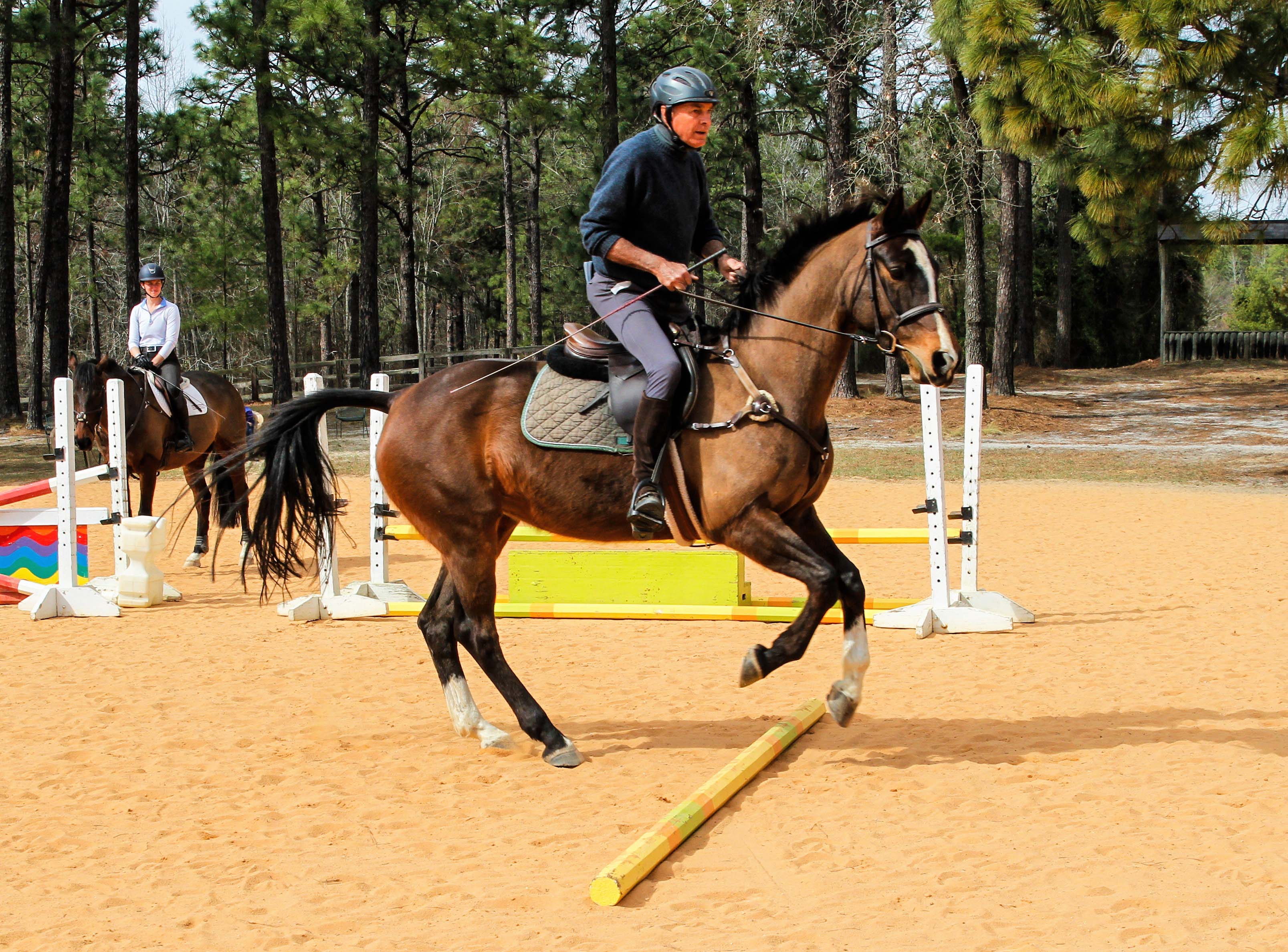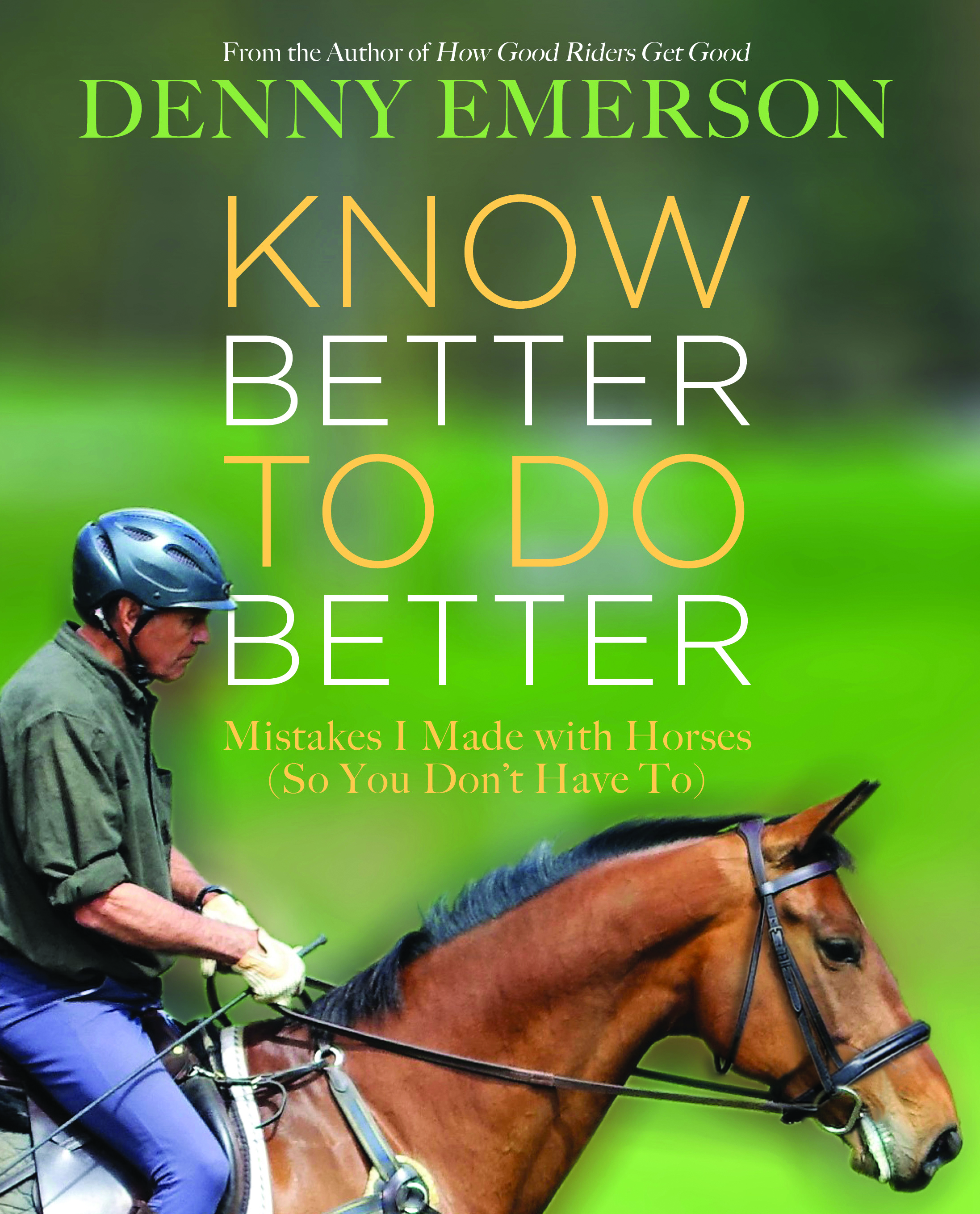This excerpt from Know Better to Do Better by Denny Emerson is reprinted with permission from Trafalgar Square Books (www.horseandriderbooks.com).
In this excerpt from his book Know Better to Do Better, renowned horseman Denny Emerson tells us how to acquire an eye for distances.
Some horses will get in right, almost like “seeing-eye” horses, but some won’t. Some will save themselves (and their riders) time after time. Some will gallop on down and eat the jump. There are canny jumpers and there are klutzy jumpers. Anyone who has jumped dozens or hundreds of horses knows this. Some horses will find the distances and some won’t. And some that find the distances some of the time will not always find the distances all of the time.
All of which leaves me with the conclusion that a rider with a good eye is in a much safer place than a rider with a bad eye—or “no eye,” as it is sometimes phrased.
This leads to the next question, “Can a rider who can’t see a distance learn to see a distance?”
I think the answer to this is “probably.” So what does this mean? Well, let’s think this through. I suspect that there are riders with such superior binocular vision that they can just “tell” whether they are right or wrong. They may not know if they are five strides away, or four strides, or six strides, but they can “just tell” if they are going to meet the distance perfectly, or if they need to shorten the stride or lengthen the stride to get to the best takeoff spot. For these rare riders simply “born” with a good eye, lucky them. They can skip the rest of this because they don’t need to learn to see a distance some other way—they already can see it, almost as a “gift from God.”
But most riders are not so blessed, not initially. They come cantering down to the fence like the guy calling his Dalmatian, “Here, Spot. Here, Spot.” Most riders need to develop their eye another way, and here are some strategies that have worked for me, and for quite a few of those I’ve taught.

Photo courtesy of Denny Emerson
An Adjustable Canter
The first thing to understand is that you have to have an adjustable canter. The reason is simple. As your eye begins to develop, you will begin to recognize that if you keep cantering the same way, the jump will be just right, too close, or too far away. So let’s just say that you are beginning to “recognize” what three strides in front of a fence looks like. You will need a canter that is adjustable enough to let you maintain it “as is” or lengthen it or shorten it, to get to that “6-feet-in-front-of-the-jump” perfect takeoff spot.
If your canter is too aggressively forward, you won’t be able to shorten. If it’s too lethargic, you won’t be able to lengthen. You need what Jack Le Goff called “a canter that gives you access to both balance and impulsion.” If you have too much impulsion, too “forward-bound” a canter, you can lengthen, but you can’t shorten.
When balance—the feeling that your horse is up and light in front of you—has “throttled” the impulsion, you can shorten the stride, but you can’t lengthen it. You need both. You need impulsion to go, but you need balance to whoa. Neither one alone is sufficient. It is easy to get one or the other. It is hard, hard, hard to have instant access to both at once. So developing a feel for an adjustable canter becomes a major goal in your quest to achieve a good eye.
The Hoofprint Game
I think the best way to start to acquire an eye is to put out a bunch of rails in the ring, and start riding at a canter toward one, then another, then another, starting by thinking, “I’m going to get an accurate three-stride eye.”
It’s pretty simple. As you get closer to the rail on the ground, you simply take a guess that you are three strides away, and you say 3-2-1. You will either be just right—about 3 or 4 feet in front of the rail, so that a normal canter stride puts the rail under the middle of the “jump” stride—or you will be too close, or you will be too far away.
Then do it again at another rail. And again, and again, hundreds of times. Then thousands of times. At some point, you will begin to develop a sense of what three strides look like. Some riders get it almost instantly, while for others it takes a long time, but it will happen if you keep practicing.
You don’t even need rails on the ground, because you can use hoofprints, dandelions in a field, pinecones on a trail—any fixed object you are cantering toward. As your number of “jumps” gets higher, your sense of canter adjustability, as well as your sense of distance, will improve. This is because you can see a distance, perhaps, but until you can also adjust the canter, it doesn’t do you any good to see it if you can’t shorten or lengthen the stride enough to get there.
At first you will probably miss a lot, no big deal. But as dozens turn into hundreds, hundreds into thousands, thousands into tens of thousands—as months and years of practice go by—you will start to both see a distance and be able to create an adjustable canter.
It is a myth that you are either born with a good eye or you are not. When Daryl Kinney, our former barn manager, first came here 10 years ago, she did not have an eye. By doing this exercise, she got a three-stride eye. Then, with more practice, a four-stride eye. Watch her ride. She almost never misses by even a foot.
Most people, I promise you this, will read this and ignore it. They will not practice enough. But most people in any endeavor will not work hard enough to get good. It is all about choice.

Pick up your copy of the Know Better To Do Better by Denny Emerson from Trafalgar Square Books HERE!
